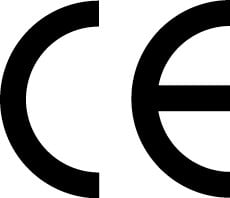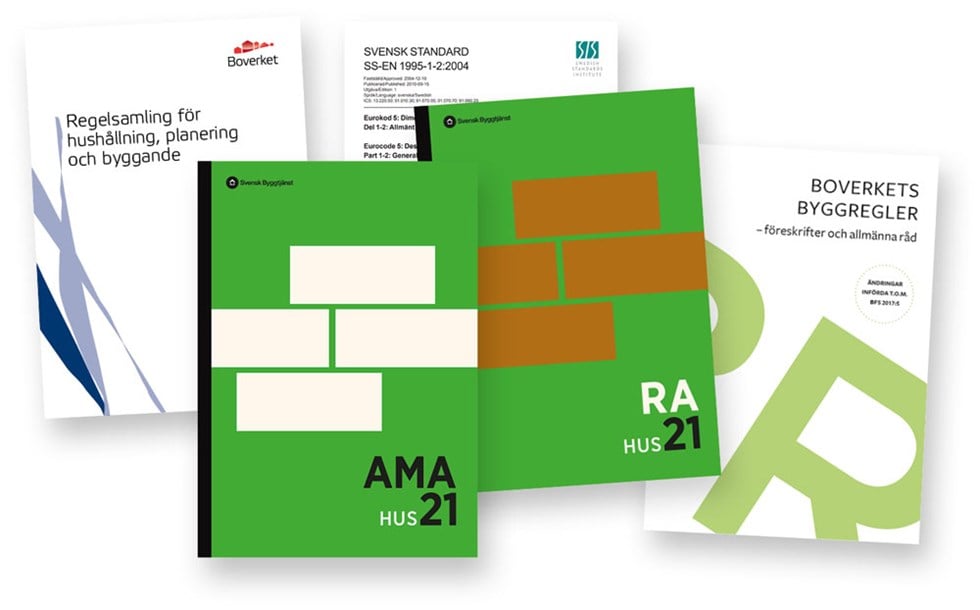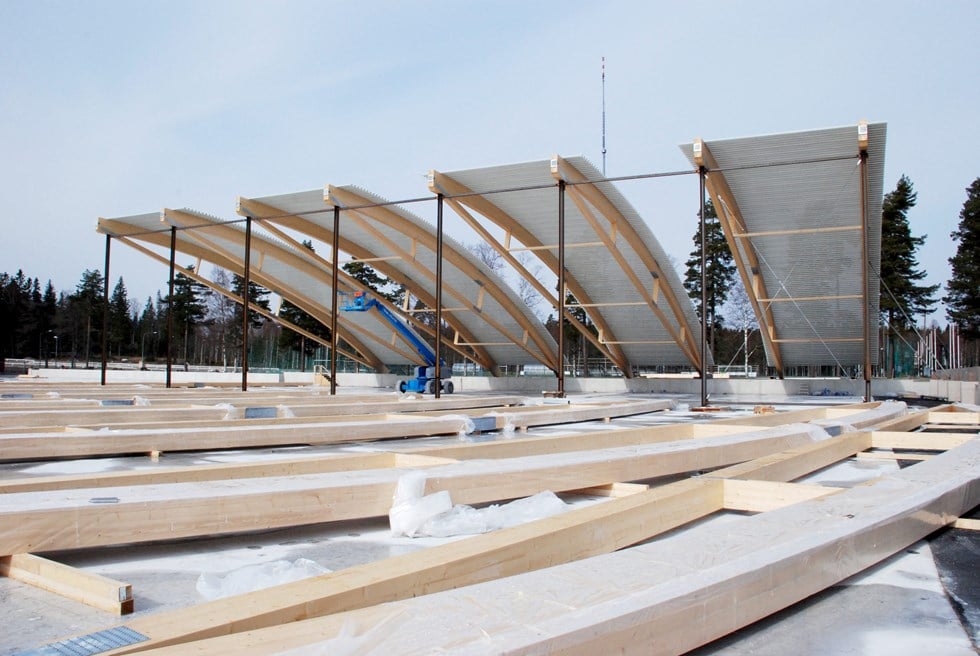Building regulations
Statutory requirements, standards and CE marking
Directives, common European standards and a shared labelling scheme have been introduced to facilitate trade within and to Europe. The directives are a type of legislation that the member states are obliged to comply with. European standards replace the national ones, and the labelling system that carries the symbol CE replaces national labelling schemes. The letters CE are an abbreviation of Conformité Européenne (European Conformity).

The CE mark is used in various product areas.

In Sweden it is currently possible to obtain type approval for products. Once CE-marking becomes compulsory for a product, this ceases to be an option. Type-approved products are still available, however. CE-marking of a product becomes compulsory if a harmonised standard exists. Voluntary labelling schemes, such as the national P mark, will have a role to play in complementing CE-marking in Sweden.
The basic requirements for most wood products are set out in the Construction Products Directive and, since 1 July 2013, the Construction Products Regulation, which specifies that the CE mark is mandatory where a harmonised standard exists. There are several different types of standards.
It should be stressed that the CE mark is not a quality label. It simply means that the performance values declared for the product have been drawn up in line with a common European standard. Performance may be declared, as happens with construction timber, using strength class designations C18, C24, C30 and C35, or following the system for windows, with values for impact resistance and other properties, for example.
CE-marking ensures that the product can be carried over the border to another country within the European Economic Area (EEA), but does not guarantee that the product can be used in that particular country. Here, national building regulations play a key role, as they determine the level of product performance that applies in each case.
The European construction standards known as Eurocodes play a key role, and the Swedish National Board of Housing, Building and Planning (Boverket) refers to these in its regulations and general recommendations on applying European construction standards – Eurokod Sverige, EKS (Boverket’s construction regulations, BKR). The version from 2019 is called EKS 11.
EKS implements the Eurocodes in Swedish building regulations. In some cases, the Eurocodes allow for national choices to be made, but in practice this option is only used to a very limited extent.
The design of connections must comply with Eurocode 5 SS-EN 1995-1-1, while the design of fireproofing must follow SS-EN 1995-1-2 and EKS 10. These standards refer to the harmonising standards SS-EN 14592 and SS-EN 14545, making CE-marking and accompanying performance declarations compulsory.
Table 46 Examples of key standards
|
Type of standard |
|
Testing standards Example: SS-EN 408:2010+A1:2012 – Timber structures – Structural timber and glued laminated timber – Determination of some physical and mechanical properties |
|
Classification standards Example: SS-EN 338:2010 – Structural timber – Strength classes |
|
Calculation standards Example: SS-EN 1995-1-1:2004/A1:2008 – Design of timber structures. General – Common rules and rules for buildings |
|
Product standards Example: SS-EN 14351-1:2006+A1:2010 – Windows and doors – Product standard, performance characteristics – Part 1: Windows and external pedestrian doorsets |
AMA and RA
AMA (Allmän Material- och Arbetsbeskrivning/General Material and Work Descriptions) is a Swedish reference resource maintained by AB Svensk Byggtjänst. It is supplemented by RA (Råd och Anvisningar/Advice and Instructions), and provides useful assistance in drawing up specifications for a tender and construction documents for contractors. AMA sets out requirements concerning materials, procedures and the end result for common building tasks. These requirements can be seen as representing what the industry considers best practice, acceptable quality, tried and tested techniques and professional conduct.
The texts may be referred to in technical specifications, quoting AMA Hus. Tender documentation for a construction-only contract will include technical specifications that usually rely on AMA. This means using codes and headings in AMA that will apply as rules in the actual project.
 Assembling a bandy hall with a glulam frame, Nässjö.
Assembling a bandy hall with a glulam frame, Nässjö.

